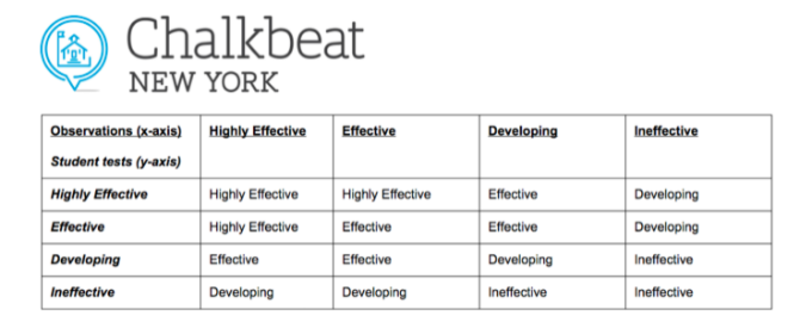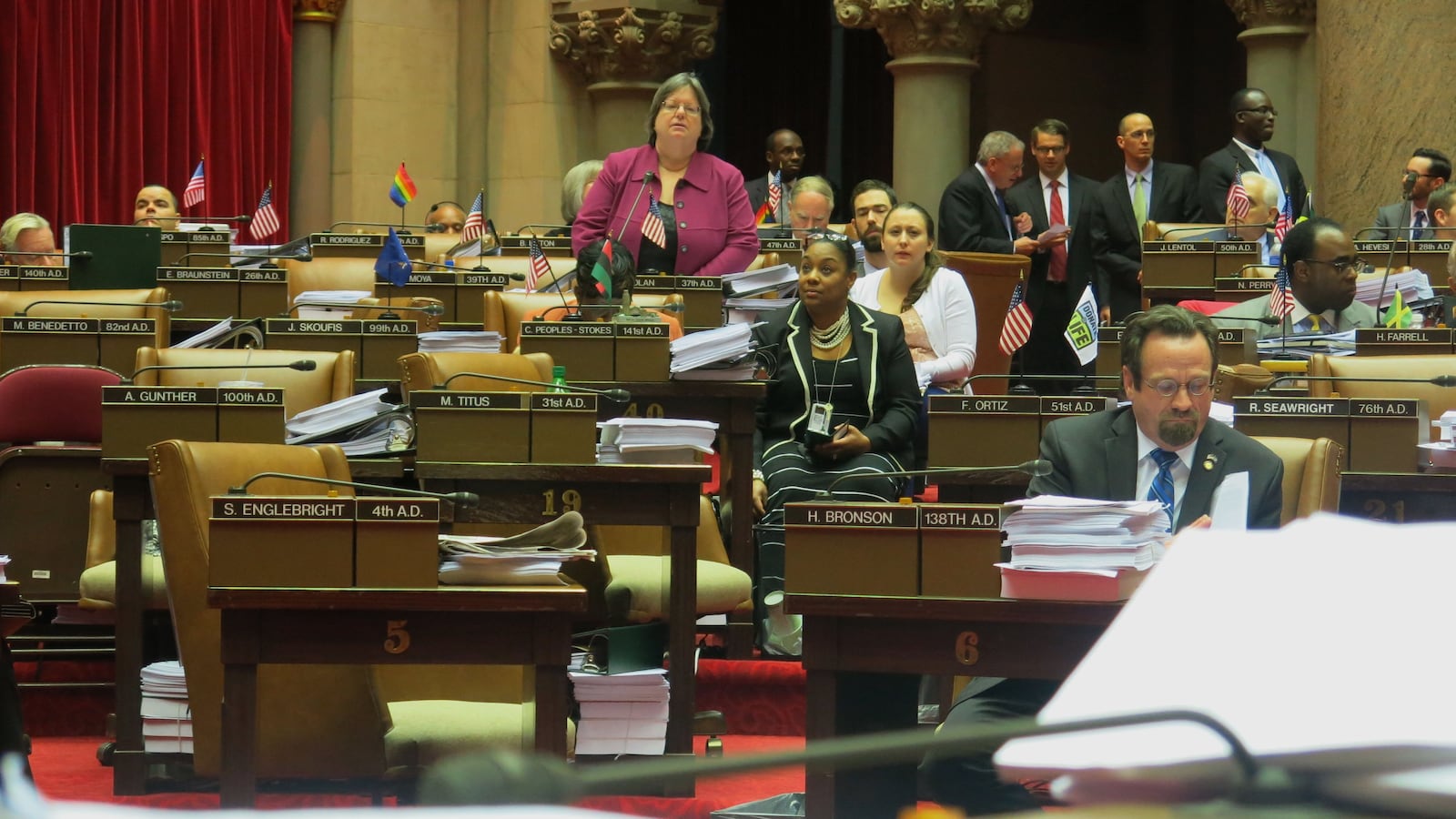Gov. Andrew Cuomo is getting much of what he wanted on teacher evaluations, a signature piece of a controversial education agenda that has dominated lawmakers’ attention since he first floated the proposal two months ago.
Both houses of the state legislature on Tuesday night passed an education portion of the state’s $142 billion budget that contained several parts of Cuomo’s agenda. The votes followed hours of raucous debate in the Assembly and Senate, whose own budget proposals earlier this week included none of the education changes that Cuomo had sought.
“It’s a shame what we’re doing here today. We have a terrible bill before us in many, many aspects,” said Bronx Assemblyman Michael Benedetto, one of several Democrats who berated Cuomo’s education proposals but ultimately voted to passed the budget, citing a large increase in education funding.
Cuomo has railed against the current teacher evaluation system for months, saying the oversized share of teachers with high ratings illustrated the system was too easy to game and in need of an overhaul. As other districts nationwide moved to reduce the role of state tests in evaluations amid concerns about their reliability, Cuomo this winter pushed for a system he saw as more objective, with tests playing a bigger role and outside observers acting as checks on principals.
Others disagreed with his prescriptions. Teachers spent months lobbying against the plan, and sagging poll numbers dogged Cuomo as negotiations continued and other education proposals fell away or were diluted.
But the new evaluation system included in the state budget deal reflects Cuomo’s vision. It weakens the role of districts and their teachers unions in devising evaluation plans and places more control with the state education department. Teachers will be graded in part by outside observers, and the scoring system could end up more heavily emphasizing the use of state tests.
Those aspects drew criticism from all sides as votes were tallied on Tuesday. The new evaluations are too test-focused, undermined principals, and represented government overreach, lawmakers said.
“Totally irresponsible and shameful,” said James Tedisco, a Republican Assemblyman, who voted against.
Education chair Catherine Nolan, a close ally of the teachers union and vocal critic of Cuomo’s proposals, defended the changes. She said the agreement represented a series of difficult trade-offs that scaled back what the governor had been seeking to do.
“I wouldn’t go so far as to say I love it, but it’s a good compromise,” Nolan said.
The budgets passed easily in the Assembly, 92-54 and in the Senate, 32-26.
“Sometimes you have to do difficult things to make new and difficult things happen,” said Chrystal People-Stokes, a Democratic Assemblywoman from Buffalo.
In a short statement released after the votes, Cuomo praised a budget that “reforms New York’s education bureaucracy.”
The new evaluations underpin a series of sweeping education policies that make up a nine-point legislative package known as the Education Transformation Act of 2015. Ratings will be used to award bonuses and tenure to teachers, as well as dismiss persistently low-ranking teachers.
For now, the legislation provides more of a framework than a plan. Several details will be hammered out in the coming months by the department and the Board of Regents. Districts will have until Nov. 15 to negotiate and implement the new plans or forfeit an increase in state aid — as happened in 2012, when New York City lost hundreds of millions of dollars.
Teachers will still earn one of four final ratings: ineffective, developing, effective, and highly effective. The new framework does away with the exact percentages — 20 percent for state tests, 20 percent on local or state tests, and 60 percent for observations — assigned in the teacher evaluation law first passed in 2010, though.
The state education commissioner (for now, a vacant position) and Regents Chancellor Merryl Tisch have been tasked with settling the details of the new scoring system — though they require approval from the full 17-member board.
Perhaps most significantly, they will have to set the “cut scores” to determine what qualifies as effective or not on observations. Other than that, the law that the legislature signed off on Tuesday night leaves education officials with relatively few options.
The default evaluation plan will be based on just two measures: state test scores and observations. It no longer requires a local testing measure, something Cuomo has blamed for a rise in standardized testing. A second testing measure, which require’s state approval, will be allowed if districts come to an agreement with their local teachers unions.
The law does not provide answers to an underlying issue for a majority of teachers, including art, physical education, and music teachers, for whom there are no standardized assessments.
Part of a teacher’s score will come from at least one observation by their principal, and one observation from an “independent” evaluator will now also be required. The independent observer must come from a different school, and districts will be able to negotiate to include observations from a highly rated teacher from the same school.
Observations and test scores will be combined into final ratings using this matrix, which is codified in law.
In other districts, such a matrix has been praised as a less prescriptive, but also less precise, scoring system for teacher evaluations than the the “numerical” system used in places like New York, Washington, D.C., and Chicago.
“The things you are providing judgment on are not extraordinarily precise themselves,” said Garth Harries, superintendent of schools in New Haven, Connecticut, which uses a matrix-style evaluation system. “Being less precise allows us to be nuanced to those kinds of issues.”

Stay up to date with what’s happening in New York City schools and education policy with our daily newsletter. Sign up here

